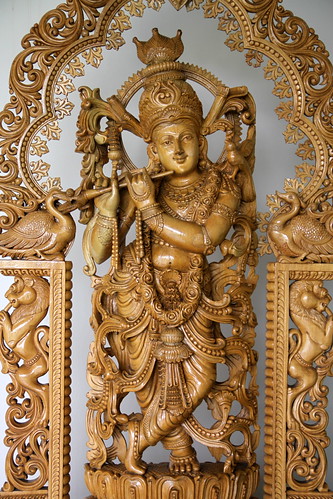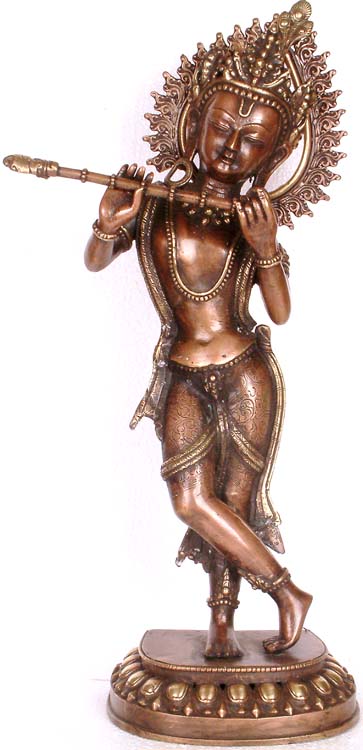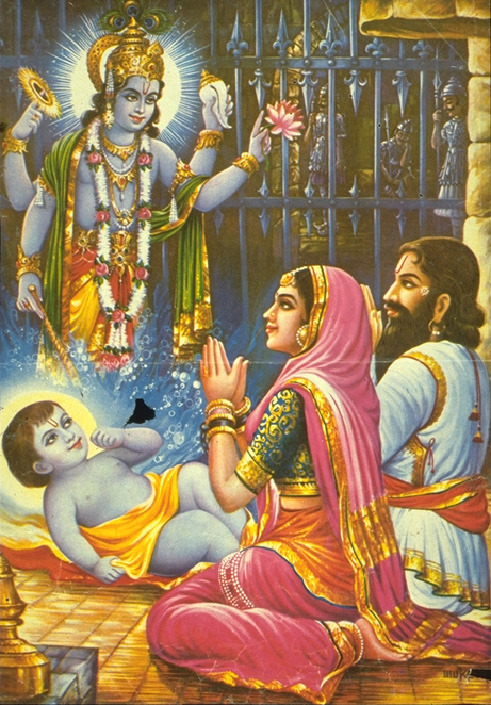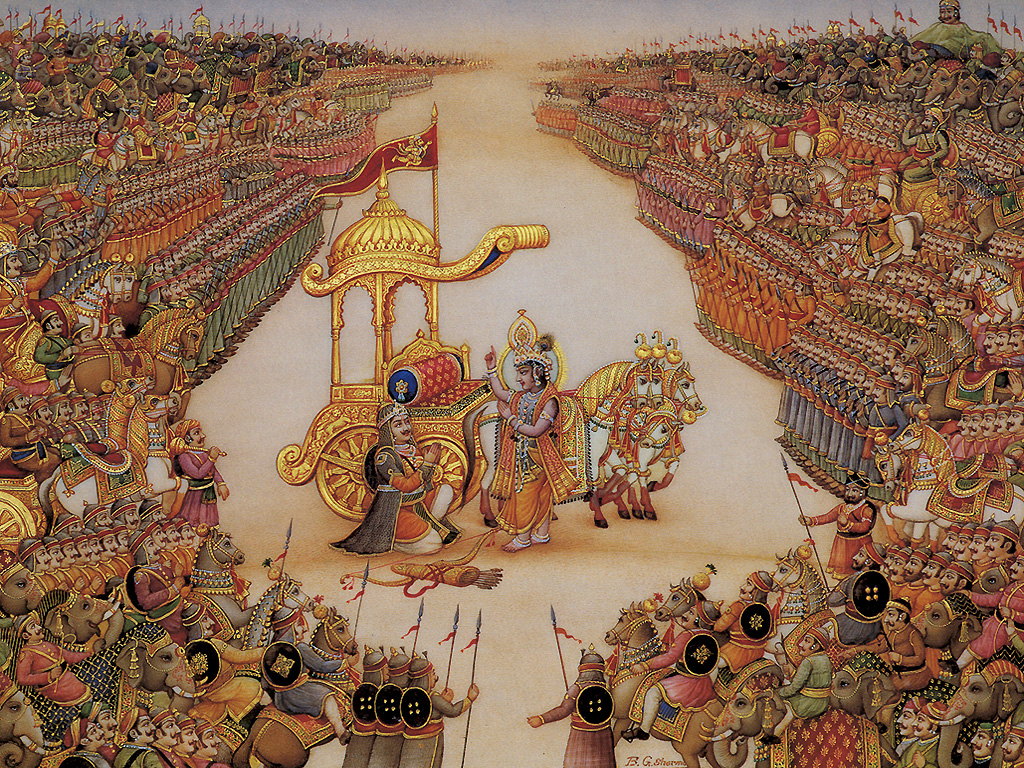Friday, 31 July 2015
| Part of a series on |
| Hinduism |
|---|
 |
Hinduism is that the dominant faith, or means of life,in South Asia, most notably Bharat. though Hinduism contains totally different philosophies, it's united by shared ideas, same matter resources, common ritual techniques, cosmology and pilgrim's journey to sacred sites. It includes Shaivism, Vaishnavism and Shaktism among alternative denominations, every with Associate in Nursing complex diversity of beliefs and practices. Hinduism, with concerning one billion followers is that the world's third largest faith, when Christianity and Islam.
Hinduism has been known as the "oldest religion" within the world, and a few practitioners check with it as Sanātana Hindu deity, "the eternal law" or the "eternal way" on the far side human origins.Western students regard Hinduism as a fusion or synthesis of varied Indian cultures and traditions, with various roots and no single founder. It prescribes the eternal duties, like honesty, refraining from injuring living beings (ahimsa), patience, forbearance, temperateness, compassion, among others.
Prominent themes in Hindu beliefs embrace (but aren't restricted to), the four Puruṣārthas, the correct goals or aims of human life, particularly Hindu deity (ethics/duties), Artha (prosperity/work), Kama (emotions/sexuality) and Moksha (liberation/freedom); destiny (action, intent and consequences), cycle (cycle of rebirth), and also the numerous Yogas (paths or practices to realize moksha). Hindu practices embrace rituals like puja (worship) and recitations, meditation, family-oriented rites of passage, annual festivals, and occasional pilgrimages. Some Hindus leave their social world and material possessions, then interact in womb-to-tomb Sannyasa (ascetic practices) to attain moksha.
Hindu texts ar classified into Shruti ("heard") and Smriti ("remembered"). These texts discuss theology, philosophy, mythology, sacred writing yajna and apomictic rituals and temple building, among alternative topics. Major scriptures embrace the Vedas, Upanishads (both Śruti), Mahabharata, Ramayana, Bhagavad sacred writing, Puranas, Manusmṛti, and Agamas (all smriti).
Etymology
The word Hindu springs (through Persian) from the Indo-Aryan/Sanskrit word Sindhu, the Indo-Aryan name for the Indus within the northwestern a part of the Indian landmass (modern day Islamic Republic of Pakistan and Northern India). in keeping with Gavin Flood, "The actual term 'hindu' 1st happens as a Persian geographical term for the people that lived on the far side the watercourse Indus (Sanskrit: Sindhu)". The term 'Hindu' then was a geographical term and didn't discuss with a faith.
The word Hindu was taken by European languages from the Arabic term al-Hind, that named the people that live across the watercourse Indus. This Arabic term was itself taken from the Persian term Hindū, that refers to any or all Indians. By the thirteenth century, geographical area emerged as a preferred different name of Republic of India, that means the "land of Hindus".
The term Hindu was later used sometimes in some Sanskrit texts like the later Rajataranginis of geographical region (Hinduka, c. 1450) and a few 16th- to 18th-century Bengali Gaudiya Vaishnava texts as well as Chaitanya Charitamrita and Chaitanya Bhagavata. it had been typically wont to distinction Hindus with Yavanas or Mlecchas. it had been solely towards the top of the eighteenth century that European merchants and colonists began to discuss with the followers of Indian religions together as Hindus. The term Hinduism was introduced into land language within the nineteenth century to denote the spiritual, philosophical, and cultural traditions native to Republic of India.
Definitions
The study of Bharat and its cultures and religions, and also the definition of "Hinduism", has been formed by the interests of victimization and by Western notions of faith.Since the Nineties, those influences and its outcomes are the subject of discussion among students of Hinduism,and have conjointly been confiscated by critics of the Western read on Bharat.
Because of the big selection of traditions and concepts lined by the term, incoming at a comprehensive definition is troublesome.the faith "defies our need to outline and reason it".Hinduism has been multifariously outlined as a faith, a non secular tradition, a collection of non secular beliefs, and "a means of life." From a Western lexical stand, Hinduism like alternative faiths is fittingly referred as a faith. In Bharat the term Hindu deity is most popular, that is broader than the western term "religion". Hindu traditionalists opt to decision it Sanatana Hindu deity (the eternal or ancient dharma)
Colonial influences
See also: Orientalism
 The notion of common denominators for many religions and traditions of Asian country was already noted from the twelfth century metal on. The notion of "Hinduism" as a "single world non secular tradition"was popularised by 19th-century European Indologists WHO trusted the "brahmana castes" for his or her data of Indian religions. This junction rectifier to a "tendency to emphasize religious writing and Brahmanical texts and beliefs because the "essence" of Hindu devoutness normally, and within the fashionable association of 'Hindu doctrine' with the varied Brahmanical faculties of the Hinduism (in explicit Advaita Vedanta)."
The notion of common denominators for many religions and traditions of Asian country was already noted from the twelfth century metal on. The notion of "Hinduism" as a "single world non secular tradition"was popularised by 19th-century European Indologists WHO trusted the "brahmana castes" for his or her data of Indian religions. This junction rectifier to a "tendency to emphasize religious writing and Brahmanical texts and beliefs because the "essence" of Hindu devoutness normally, and within the fashionable association of 'Hindu doctrine' with the varied Brahmanical faculties of the Hinduism (in explicit Advaita Vedanta)."Indigenous understanding
Sanātana Hindu deity
See also: Sanātanī
To its adherents, Hinduism may be a ancient method of life. several practitioners talk to Hinduism as Sanātana Hindu deity, "the eternal law" or the "eternal way". It refers to the "eternal" duties all Hindus have to be compelled to follow, no matter category, caste, or sect, like honesty, refraining from injuring living beings, purity, goodwill, mercy, patience, forbearance, control, generosity, and asceticism. this is often contrasted with svadharma, one's "own duty", the duties to be followed by members of a selected caste and stage of life. in keeping with Knott, this also
refers to the thought that its origins lie on the far side human history, and its truths are divinely disclosed (shruti) and passed down through the ages to the current day within the most ancient of the world's scriptures, the Veda. (Knott 1998, p. 5)
According to the Encyclopædia Britannica;-
The term has additionally additional recently been utilized by Hindu leaders, reformers, and nationalists to talk to Hinduism as a unified world faith. Sanatana Hindu deity has therefore become a word for the "eternal" truth and teachings of Hinduism, the latter formed of as not solely transcendent of history and unchanging however additionally as indiscrete and ultimately oecumenical.
The Sanskritic language word Hindu deity features a a lot of deeper that means than faith and isn't its equivalent. All aspects of a Hindu life, specifically exploit wealth (Artha), fulfillment of needs (kama), and attaining liberation (moksha) area unit a part of Hindu deity that encapsulates the "right method of living" and eternal harmonious principles in their fulfillment.
Growing Hindu identity
This sense of unity and antiquity has been developed over a extended amount. in keeping with Nicholson, already between the twelfth and also the sixteenth centuries "certain thinkers began to treat as one whole the varied philosophical teachings of the Upanishads, epics, Puranas, and also the faculties celebrated retrospectively because the "six systems" (saddarsana) of thought Hindu philosophy." The tendency of "a blurring of philosophical distinctions" has additionally been noted by Burley. Hacker known as this "inclusivism" and Michaels speaks of "the identificatory habit". Lorenzen locates the origins of a definite Hindu identity within the interaction between Muslims and Hindus, and a method of "mutual self-definition with a different Muslim other", that started well before 1800.Michaels notes:
As a nullification to monotheism ascendance and as a part of the continued method of regionalization, 2 non secular innovations developed within the Hindu religions: the formation of sects and a historicization that preceded later nationalism aints and typically militant sect leaders, like the Marathi author Tukaram (1609-1649) and Ramdas (1608-1681), articulated ideas within which they canonised Hinduism and also the past. The Brahmins additionally created more and more historical texts, particularly eulogies and chronicles of sacred sites (Mahatmyas), or developed a reflexive passion for aggregation and assembling in depth collections of quotations on varied subjects.
This inclusivism was more developed within the nineteenth and twentieth centuries by Hindu reform movements and Neo-Vedanta, and has become characteristic of recent Hinduism.
Hindu modernism
Swami Vivekananda was a key figure in introducing Hinduism and Yoga in Europe and USA, raising religious awareness and creating Hinduism a world faith.
See also: Hindu reform movements
Beginning within the nineteenth century, Indian modernists re-asserted Hinduism as a serious quality of Indian civilisation, meantime "purifying" Hinduism from its Buddhism parts and elevating the religious writing elements. Western stereotypes were reversed, accenting the universal aspects, and introducing fashionable approaches of social issues. This approach had a good attractiveness, not solely in Asian country, however additionally within the west. Major representatives of "Hindu modernism" area unit Raja Rammohan Roy, Vivekananda, philosopher and Mahatma Gandhi.
 Raja Rammohan Roy is thought because the father of the Hindu Renaissance. He was a serious influence on Hindoo Vivekananda (1863-1902), who, in keeping with Flood, was "a figure of nice importance within the development of a contemporary Hindu self-understanding and in formulating the West's read of Hinduism." Central to his philosophy is that the concept that the divine exists all told beings, that each one individuals are able to do union with this "innate divinity", which seeing this divine because the essence of others can more love and social harmony. in keeping with Vivekananda, there's a vital unity to Hinduism, that underlies the variety of its several forms. in keeping with Flood, Vivekananda's vision of Hinduism "is one typically accepted by most communicative bourgeois Hindus nowadays."
Raja Rammohan Roy is thought because the father of the Hindu Renaissance. He was a serious influence on Hindoo Vivekananda (1863-1902), who, in keeping with Flood, was "a figure of nice importance within the development of a contemporary Hindu self-understanding and in formulating the West's read of Hinduism." Central to his philosophy is that the concept that the divine exists all told beings, that each one individuals are able to do union with this "innate divinity", which seeing this divine because the essence of others can more love and social harmony. in keeping with Vivekananda, there's a vital unity to Hinduism, that underlies the variety of its several forms. in keeping with Flood, Vivekananda's vision of Hinduism "is one typically accepted by most communicative bourgeois Hindus nowadays."
Sarvepalli Radhakrishnan was "one of India's most scholarly students to have interaction with western and Indian philosophy". He sought-after to reconcile western rationalism with Hinduism, "presenting Hinduism as associate basically philosophical doctrine and humanistic non secular expertise."This "Global Hinduism"features a worldwide attractiveness, transcending national boundaries and, in keeping with Flood, "becoming a world faith aboard Christianity, Islam and Buddhism",each for the Hindu diaspora communities and for westerners WHO area unit drawn to non-western cultures and religions. It emphasizes universal non secular values like social justice, peace and "the non secular transformation of humanity." it's developed part attributable to "re-enculturation", or the dish result, within which parts of Hindu culture are exported to the West, gaining quality there, and as a consequence additionally gained larger quality in Asian country. This globalisation of Hindu culture was initiated by Hindoo Vivekananda and his institution of the Ramakrishna Mission, an endeavor continuing by alternative academics, "bringing to the West teachings that became a crucial cultural force in western societies, and that successively became a crucial cultural force in Asian country, their place of origin."
Western understanding
Western students regard Hinduism as a fusion or synthesis of varied Indian cultures and traditions.
Hinduism's tolerance to variations in belief and its broad vary of traditions create it tough to outline as a faith in keeping with ancient Western conceptions.
Some lecturers counsel that Hinduism are often seen as a class with "fuzzy edges" instead of as a well-defined and rigid entity. Some kinds of non secular expression area unit central to Hinduism et al., whereas not as central, still stay among the class. supported this concept Ferro-Luzzi has developed a 'Prototype Theory approach' to the definition of Hinduism
Diversity and inclusivism
Diversity
Hinduism has been delineate as a convention having a "complex, organic, multileveled and typically internally inconsistent nature."Hinduism doesn't have a "unified system of belief encoded during a declaration of religion or a creed",however is very Associate in Nursing umbrella term comprising the plurality of non secular phenomena of Asian nation. per the Supreme Court of Asian nation,
Unlike alternative religions within the World, the Hindu faith doesn't claim anyone Prophet, it doesn't worship anyone God, it doesn't believe anyone philosophic idea, it doesn't follow anyone act of non secular rites or performances; really, it doesn't satisfy the standard options of a faith or creed. it's some way of life and zilch more".
Part of the matter with one definition of the term "Hinduism" is that the undeniable fact that Hinduism doesn't have one historical founder. it's a synthesis of assorted traditions, the "Brahmanical orthopraxy, the renouncer traditions and fashionable or native traditions."
Some Hindu philosophies postulate a faith metaphysics of creation, of sustenance, and of the destruction of the universe, nonetheless some Hindus area unit atheists, they read Hinduism a lot of as philosophy than faith.
Inclusivism
Despite the variations, there's conjointly a way of unity. Most Hindu traditions revere a body of non secular or sacred literature, the Vedas, though there area unit exceptions. Halbfass cites Renou, per whom this reverence could be a mere
 "tipping of the hat", a conventional gesture of saluting Associate in Nursing "idol" with none additional commitment."
"tipping of the hat", a conventional gesture of saluting Associate in Nursing "idol" with none additional commitment."
Halbfass doesn't believe this characterization and states that, though Shaivism and Vaishaism could also be considered "self-contained spiritual constellations", there's a degree of interaction and reference between the "theoreticians and literary representatives" of every tradition that indicates the presence of "a wider sense of identity, a way of coherence during a shared context and of inclusion during a common framework and horizon".
Festivals
Main article: Hindu festivals
The pageant of lights- Diwali, is well known by Hindus everywhere the globe.
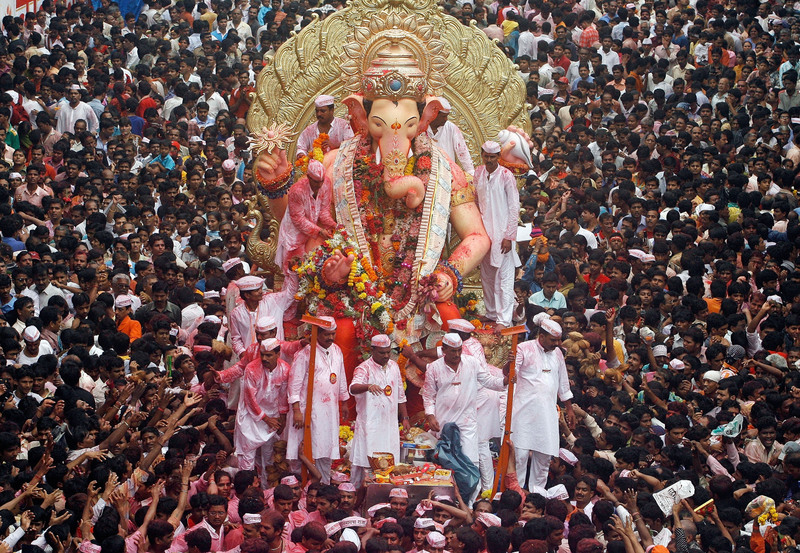 Hindu festivals (Sanskrit: Utsava; literally: "to elevate higher") square measure ceremonies that weave individual and social life to Dharma. Hinduism has several festivals throughout the year, wherever the dates square measure set by the satellite lunisolar calendar, several coinciding with either the total moon (Holi) or the phase of the moon (Diwali), usually with seasonal changes.Some festivals square measure found solely regionally and that they celebrate native traditions, whereas a couple of like Holi and Diwali square measure pan-Hindu.
Hindu festivals (Sanskrit: Utsava; literally: "to elevate higher") square measure ceremonies that weave individual and social life to Dharma. Hinduism has several festivals throughout the year, wherever the dates square measure set by the satellite lunisolar calendar, several coinciding with either the total moon (Holi) or the phase of the moon (Diwali), usually with seasonal changes.Some festivals square measure found solely regionally and that they celebrate native traditions, whereas a couple of like Holi and Diwali square measure pan-Hindu.
The festivals usually celebrate events from Hindu mythology, connoting non secular themes and celebrating aspects of human relationships like the Sister-Brother bond over the Raksha Bandhan (or Bhai Dooj) pageant. an equivalent pageant generally marks totally different mythologies betting on the Hindu denomination, and therefore the celebrations incorporate regional themes, ancient agriculture, local arts, family get togethers, Puja rituals and feasts.
Some major regional or pan-Hindu festivals include:
Makar Sankranti
Maha Shivaratri
Pongal
Holi
Navaratri
Vasant Panchami
Thaipusam
Ram Navami
Krishna Janmastami
Ganesh Chaturthi
Shigmo
Dussera
Durga Puja
Diwali
Gudi Padwa
Ugadi
Bihu
Bonalu
Rath Yatra
Guru Purnima
Raksha Bandhan
Onam
Gowri Habba
Chhath
Modern Hinduism (from c.1800)
Russian Krishnaites celebrating Ratha Yatra. within the late twentieth century varieties of Hinduism have mature autochthonous roots in elements of Russia, considerably in Altay wherever Hinduism is currently the faith of twenty-two of the population.
With the onset of a people rule, the constitution of Bharat by a people, there additionally started a Hindu renaissance within the nineteenth century, that deeply modified the understanding of Hinduism in each Bharat and also the west. Indology as a tutorial discipline of finding out Indian culture from a eu perspective was established within the nineteenth century, diode by students like grievous bodily harm Müller and John Woodroffe. They brought religious writing, Puranic and Tantric literature and philosophy to Europe and also the us. Western specializer explore for the "essence" of the Indian religions, discerning this within the Vedas, and in the meantime making the notion of "Hinduism" as a unified body of non secular praxis and also the in style image of 'mystical India'. this concept of a religious writing essence was confiscated by Hindu reform movements because the Brahmo Samaj, that was supported for a short time by the Protestant denomination, in conjunction with the concepts of religious doctrine and Perennialism, the thought that each one religions share a standard mystic ground. This "Hindu modernism", with proponents like Vivekananda, Aurobindo and statesman, became central within the in style understanding of Hinduism.
Popularity within the west
Influential 20th-century Hindus were Ramana Maharshi, B.K.S. Iyengar, Paramahansa Yogananda, Prabhupada (founder of ISKCON), Sri Chinmoy, Hindoo avatar et al. United Nations agency translated, reformulated and conferred Hinduism's foundational texts for up to date audiences in new iterations, raising the profiles of Yoga and Hindooism within the West and attracting followers and a focus in Bharat and abroad.
Hindu practices like Yoga, Ayurvedic health, divination (astrology, palmistry, numerology), Tantric physiological property through Neotantra and also the Hindu deity Sanskrit literature have unfold on the far side Hindu communities and are accepted by many non-Hindus:
"Hinduism is attracting Western adherents through the related apply of yoga. Yoga centers within the West—which usually advocate vegetarianism—attract young, knowledgeable Westerners United Nations agency square measure drawn by yoga's edges for the physical and emotional health; there they're introduced to the Hindu school of thought instructed by most yoga lecturers, referred to as Hindooism."
It is calculable that around thirty million Americans and five million Europeans often apply some type of yoga. In Australia, the amount of practitioners is concerning three hundred,In New Sjaelland the amount is additionally around three hundred,
Hindutva
In the twentieth century, Hinduism additionally gained prominence as a political force and a supply for national identity in Bharat. With origins derived back to the institution of the Hindu Mahasabha within the 1910s, the movement grew with the formulation and development of the Hindutva ideology within the following decades; the institution of Rashtriya Swayamsevak Sangh (RSS) in 1925; and also the entry, and later success, of RSS offshoots Jana Sangha and Bharatiya Janata Party (BJP) in electoral politics in post-independence Bharat. Hindu religiousness plays a very important role within the nationalist movement.
Demographics
Hinduism - share by country
Part of a series on
Hinduism by country
Africa
Asia
Europe
North America
Oceania
South America
This box: read speak edit
Hinduism could be a major faith in Asian nation. Hinduism was followed by around eighty.5% of the country's population of one.21 billion (2012 estimate) (960 million adherents). alternative important populations area unit found in Kingdom of Nepal (23 million), East Pakistan (15 million) and therefore the Indonesian island of Bali (3.9 million). the bulk of the Vietnamese Cham individuals conjointly follow Hinduism.
Countries with the best proportion of Hindus from Hinduism by country (as of 2008):
 Nepal 81.3%
Nepal 81.3% India 80.5%
India 80.5% Mauritius 48.5%
Mauritius 48.5% Guyana 28%
Guyana 28% Fiji 27.9%
Fiji 27.9% Bhutan 25%
Bhutan 25% Trinidad and Tobago 22.5%
Trinidad and Tobago 22.5% Suriname 20%
Suriname 20% Sri Lanka 12.6%
Sri Lanka 12.6% Bangladesh 9.6%
Bangladesh 9.6% Qatar 7.2%
Qatar 7.2% Réunion 6.7%
Réunion 6.7% Malaysia 6.3%
Malaysia 6.3% Bahrain 6.25%
Bahrain 6.25% Kuwait 6%
Kuwait 6% Singapore 5.1%
Singapore 5.1% United Arab Emirates 5%
United Arab Emirates 5% Oman 3%
Oman 3% Belize 2.3%
Belize 2.3% Seychelles 2.1%
Seychelles 2.1%
Demographically, Hinduism is that the world's third largest faith, once Christianity and Islam.
Conversion discussion
In the era, spiritual conversion from and to Hinduism has been a controversial subject. Some state the construct of missionary conversion, either way, is anathema to the precepts of Hinduism.
 Religious conversion to Hinduism includes a long history outside Asian nation. Merchants and traders of Asian nation, significantly from the Indian solid ground, carried their spiritual ideas, that semiconductor diode to non secular conversions to Hinduism in geographical area. at intervals Asian nation, archaeological and matter proof like the 2d century BCE Heliodorus pillar recommend that Greeks and alternative foreigners reborn to Hinduism. the talk on proselytization and spiritual conversion between Christianity, Islam and Hinduism is more moderen, and began within the nineteenth century.
Religious conversion to Hinduism includes a long history outside Asian nation. Merchants and traders of Asian nation, significantly from the Indian solid ground, carried their spiritual ideas, that semiconductor diode to non secular conversions to Hinduism in geographical area. at intervals Asian nation, archaeological and matter proof like the 2d century BCE Heliodorus pillar recommend that Greeks and alternative foreigners reborn to Hinduism. the talk on proselytization and spiritual conversion between Christianity, Islam and Hinduism is more moderen, and began within the nineteenth century.
Religious leaders of some Hindu reform movements like the Arya Samaj launched Shuddhi movement to convert and convert Muslims and Christians back to Hinduism, whereas those like the Brahmo Samaj urged Hinduism to be a non-missionary faith. of these sects of Hinduism have welcome new members to their cluster, whereas alternative leaders of Hinduism's various faculties have expressed that given the intensive proselytization activities from missionary Islam and Christianity, this "there isn't any such issue as proselytism in Hinduism" read should be re-examined.
In recent decades, thought Hinduism faculties have tried to systemize ways in which to just accept spiritual converts, with a rise in inter-religious mixed marriages. The appropriateness of conversion from major religions to Hinduism, and contrariwise, has been associate degreed remains an actively debated topic in Asian nation, and in state










